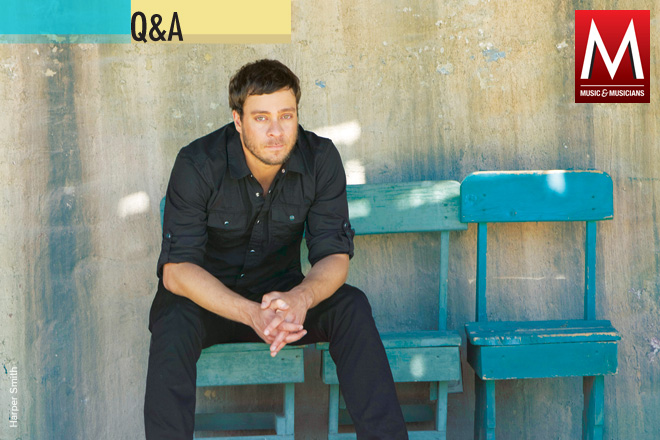AMOS LEE
Getting out of his comfort zone with an unexpected collaboration
For his fourth and latest album, Mission Bell, Amos Lee teamed with members of the critically acclaimed Americana band Calexico. Recorded at the group’s Wavelab Studio in Tucson, Ariz., the album frames Lee’s storytelling skills in a blend of roots music and old-school R&B. The Philadelphia native and onetime elementary school teacher spoke with us about the new music, his early influences and his classroom style.
What was your goal for the album?
I wanted to make a cohesive sonic statement. I wanted there to be threads that would flow from the first song to the last. In the past I’ve tried to do that, but I haven’t always succeeded. It’s becoming a quaint concept, but I like to listen to entire albums rather than just shuffling songs.
How did you meet Calexico?
I did a gig with them four years ago in Vienna, Austria, where we hung out together. I was brainstorming who would be good to work with for these songs, and someone mentioned them. I thought it was a great idea, precisely because their music is so different from what I’ve done in the past. I wanted to get out of my comfort zone and work with people I had never worked with before.
What were the sessions like?
I didn’t have any pre-conceived notions about what might happen in the studio, which was fine. I wanted to be surprised. The songs themselves are the fundamental part of what I do, and that’s what I lean on. I was confident enough in the songs that I was content to let them live and breathe with the Calexico guys. We opened up the songs together. It was sort of like hatching eggs.
Who are your influences?
My mom listened to great stuff when I was in the womb, like B.B King’s Live in Cook County Jail and Bonnie Raitt’s Takin’ My Time. I was born into the blues, so to speak, and that will always be there. And then there’s John Prine, who I’ve picked up much from and whose songs I relate to. At once his songs have a good feeling and a sad component. No one’s ever been better at summing things up in a song with very few words than Bill Withers. Al Green’s The Belle Album was important to me too.
Is the Gibson J-100 acoustic jumbo still your main guitar?
Absolutely. I’ve written most of my songs on that guitar. I like the mid-bottom sound you can get with a jumbo. When I was starting out, I felt my voice was on the tenor side, so I liked the balance that was created between that guitar sound and my voice. I also like that the J-100 is beautiful without being too fancy or over the top. I also have two J-45s. Those guitars work well with dropped-down tunings, which I used on a couple of songs on the new album. The J-45s are better for fingerpicking.
Is performing similar to teaching?
When you’re performing, there’s an implicit agreement between you and the audience that you both want to be there. In school, the kids don’t always want to be there, and sometimes you don’t want to be there either. To be a teacher, you have to be inspired—much like a musician—so the endeavors are similar in that respect. I didn’t get the chance to develop as a teacher, but I have gotten that chance as a musician. What I’ve learned is that most great music stems from the same place. It’s all soulful.
–Russell Hall




comment closed